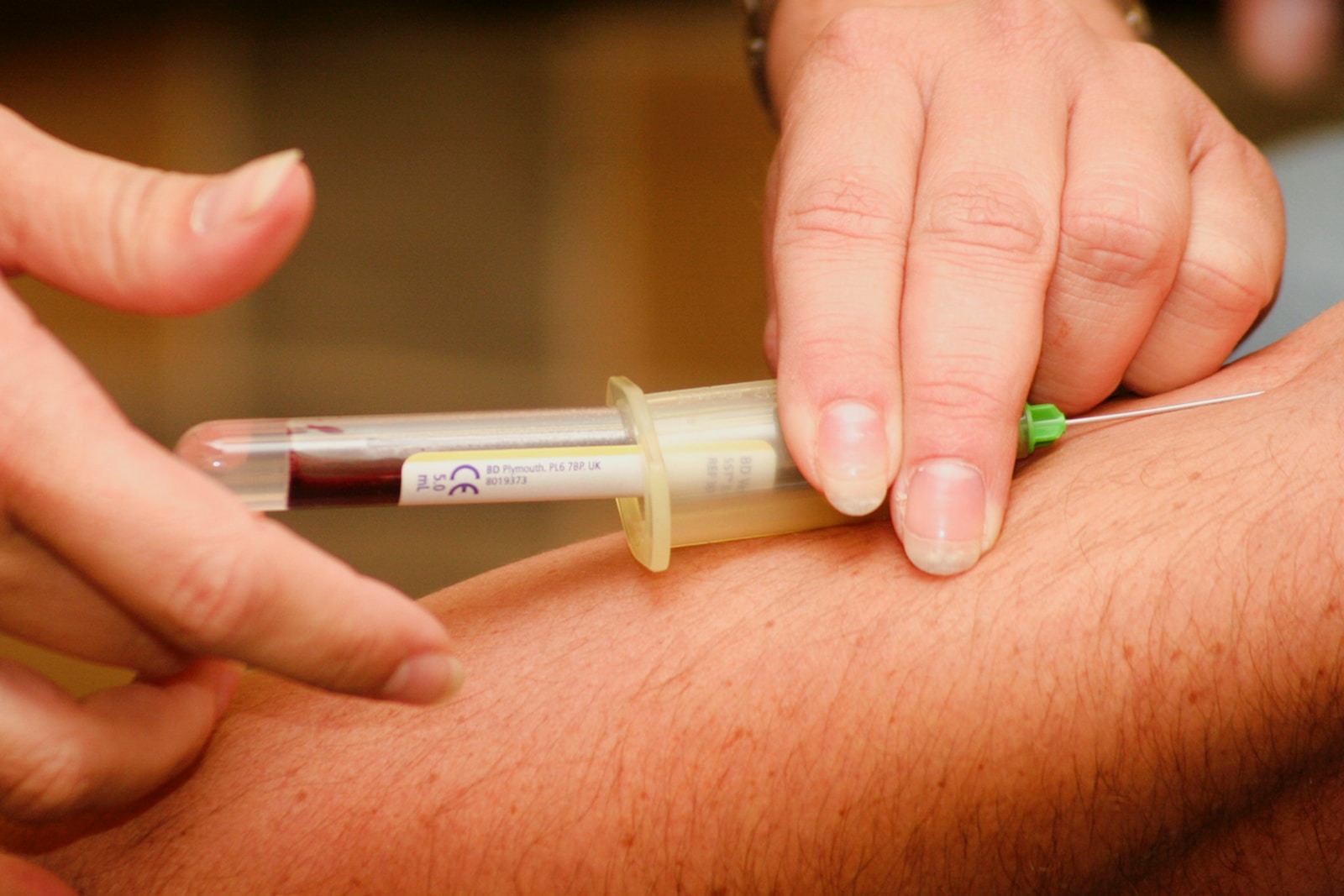Ever taken a deep dive into the world of medical tests? If not, brace yourself for an insightful journey through the intriguing maze of Full Blood Panel Tests. Let’s dive into the colorful sea of blood cells, uncover the mysteries that our bloodstream holds, and decipher the codes our body tries to communicate through these little cellular messengers.
Contents
Why Full Blood Panel Tests?
Blood, our life-giving fluid, circulates in our veins and arteries like stories unfolding within the pages of a dynamic book. But how often do we truly take the time to understand its language? If you’ve ever been bamboozled by a bout of dizziness, a recurrent migraine, or an unexplained fatigue, you’ve likely sought answers through a full blood panel test. Let’s decode why.
Your Body’s Communication System
Think of your body as a bustling city, with blood being the primary communication channel. When a part of the city faces disruption, it sends signals – a cry for attention. Similarly, changes in our blood composition are the body’s SOS signals, indicating potential problems or imbalances.
A Window to Hidden Ailments
Imagine you’re reading a detective novel where subtle hints hint at a bigger mystery. Similarly, your blood contains markers that can suggest potential health threats. Whether it’s a dormant infection, an immune response, or a nutritional deficiency, a blood panel test can help identify it long before overt symptoms appear.
Monitoring Chronic Conditions
For those living with chronic conditions such as diabetes, hypertension, or thyroid disorders, a full blood panel is akin to a periodic system check-up. It helps monitor the disease’s progression and ensures that treatment modalities are working effectively.
Prevention Over Cure
Why wait for a storm to hit when you can prepare in advance? Regular blood tests can act as preventive measures. For instance, catching cholesterol buildup early can lead to dietary and lifestyle changes that prevent cardiovascular issues in the future.
Comprehensive Health Blueprint
Your blood holds the key to various health parameters. From the oxygen-carrying capacity of your red blood cells to the efficiency of your liver in detoxifying, a full blood panel provides a holistic view of your body’s performance.
Nutritional and Hormonal Balance
Feeling more tired than usual? It might be more than just lack of sleep. Blood tests can highlight imbalances in vitamins and hormones, letting you address specific deficiencies.
Peace of Mind
Sometimes, the psychological benefit is as essential as the physiological ones. Getting a clean bill of health after a blood test can provide peace of mind. Conversely, if there’s an issue, early detection offers a better chance at effective treatment.
Understanding the Basics
Ah, the blood flowing through our veins. More than just a life-giving substance, it’s a rich tapestry of information. Let’s embark on a literary journey, delving deeper into the tales our blood has to tell.
The Main Characters
- Cells: These are the protagonists of our blood’s tale. Every drop holds:
- Red Blood Cells (RBCs): Responsible for transporting oxygen, think of RBCs as the ever-reliable postmen of our body, delivering life-sustaining oxygen to every corner.
- White Blood Cells (WBCs): The body’s defense force. Like knights guarding a fortress, they protect us from invasions, be it bacteria, viruses, or other harmful invaders.
- Platelets: These are the mediators. Got a cut? They rush to the scene, ensuring that blood clotting happens smoothly, much like diplomats broker peace treaties.
- Hormones: Hormones act as messengers. They are the storytellers, carrying messages from one part of the body to another. From controlling growth, metabolism, mood, to reproduction, their tales are as varied as they are vital.
- Enzymes: Enzymes are the doers, the workhorses. They accelerate chemical reactions, ensuring processes like digestion and detoxification proceed efficiently. Imagine them as the busy elves in Santa’s workshop, ensuring everything runs on schedule.
The Setting: Our Body’s Landscape
The setting of our body’s intricate tale is a vast, dynamic landscape stretching from the craggy ridges of our brain’s neurons to the expansive plains of our skin and the cavernous depths of our organs. Within this expansive terrain, myriad characters—be they cells, proteins, or hormones—act out their parts, performing in a grand dance of life.
They communicate, react, and adapt to ever-changing scenarios, painting a picture of an ecosystem as intricate as any forest or ocean. Every heartbeat, every thought, every breath is a result of this delicate interplay, choreographed on the grand stage that is our body. Just like an epic saga unfolding against the backdrop of majestic mountains and deep-sea trenches, our body’s narrative is a testament to the marvels of nature’s design.
Plot Twists and Cliffhangers
The tale of our body is punctuated with dramatic plot twists and cliffhangers, much like the chapters of an engrossing novel. When seemingly minute variations occur, such as a spike in glucose or an unexpected enzyme level, the narrative shifts, signaling underlying subplots that require our attention.
These biochemical cues, analogous to a storyteller’s foreshadowing, can be subtle hints or glaring alarms. They might indicate a silent battle against diabetes, the quiet stress of the liver, or the roar of an imminent infection. A blood panel serves as our synopsis, giving us a glimpse into the ongoing chapters of our health, helping us anticipate the storyline and intervene before a cliffhanger becomes a tragedy.
The Narrator: The Lab Technician
In the intricate narrative of our body’s health, the lab technician emerges as the dedicated narrator. Armed with knowledge, precision, and a meticulous eye, they navigate the intricate lexicon of cells, enzymes, and hormones, translating complex bio-sequences into decipherable tales.
It’s their adept hands and discerning eyes that transform a simple vial of blood into a comprehensive chapter about our well-being. Without them, the intricate nuances of our body’s stories might remain unread, their messages lost in translation. With every test they conduct, they help ensure that the health odysseys within each of us are not just understood, but also rightly conveyed.
The Reviewers: Doctors
Stepping in as the discerning reviewers of our body’s chronicles are our doctors. With years of training and a wealth of experience, they critically analyze and interpret the chapters of our health, unraveling the complex interplay of symptoms, markers, and indicators. Like astute literary critics, they delve deep into the nuances of the story, connecting dots, anticipating plot developments, and identifying underlying themes.
Their guidance not only fosters comprehension but also charts the course for interventions and remedies. They play a pivotal role in ensuring our body’s narrative remains not just engaging but also thriving, fostering a tale of wellness and vitality.
The Full Blood Panel Spectrum
When it comes to health, our bodies are like intricate symphonies, with every organ and system playing its own unique tune. A full blood panel test is like an expert conductor, ensuring each section of the orchestra is in tune and playing in harmony. Let’s break down the various sections of this vast spectrum and understand the melodies each one resonates with.
Complete Blood Count (CBC): The Foundational Notes
- Red Blood Cells (RBCs): These tiny cells are the unsung heroes, tirelessly transporting oxygen to every nook and cranny of our bodies. Their count can reflect conditions like anemia or polycythemia.
- White Blood Cells (WBCs): These are the guardians, the watchmen. A spike in their count might indicate an ongoing battle against infection, while a drop could hint at potential immune system issues.
- Platelets: The fixers of the blood world. They clot our blood, preventing excessive bleeding. Too few can signal conditions like thrombocytopenia.
- Hemoglobin: This iron-rich protein gives blood its red hue. It binds with oxygen and acts as the transport van for RBCs.
Metabolic Markers: The Rhythm Section
- Kidney Function: Through markers like creatinine and blood urea nitrogen, we get a glimpse of how well our kidneys are filtering waste.
- Glucose Levels: The body’s primary energy source. Monitoring glucose is crucial, especially for diabetics.
- Electrolytes: Salts and minerals like sodium, potassium, and chloride ensure our body’s electrical signals are on point, guaranteeing heart, muscle, and nerve functions are in tune.
Lipid Profile: The Crescendo and Decrescendo
- Cholesterol: Both the good (HDL) and the bad (LDL) together shape our cardiovascular health’s narrative.
- Triglycerides: Another type of fat in our blood. High levels might point to a diet too rich in sugars and fats or even genetic factors.
Liver Enzymes: The Harmonizers
Exploring markers like ALT, AST, and ALP provides insights into the health of our body’s primary detox center – the liver. Elevated levels can be a call to action, signaling potential liver ailments.
Thyroid Panel: The Maestros
- T3, T4, and TSH: These hormones orchestrate our metabolism. A well-balanced thyroid panel ensures that everything from our energy levels to our body temperature remains harmonious.
Hormonal Levels: The Soloists
Whether it’s testosterone, estrogen, progesterone, or others, hormones play solo parts that significantly influence our mood, growth, metabolism, and reproduction.
Vitamin Levels: The Backing Vocals
Though subtle, vitamins play a crucial role in maintaining our body’s chorus. Whether it’s Vitamin D ensuring bone health or Vitamin B12 aiding in nerve function, these are essential for our body’s opus.
Reading Between the Lines
The human body, in its magnificent complexity, speaks a language of its own. It communicates through various signals, and in the realm of healthcare, numbers often become its script. But numbers, just like isolated words in a novel, need context. They need to be woven into meaningful narratives for genuine comprehension. Let’s understand how this transpires in the world of blood panels.
The Enigma of Numbers
Imagine receiving a book written in an unfamiliar language. The words are there, but their meaning eludes you. Similarly, the results from a full blood panel test can seem like cryptic codes. You might see “HDL 60 mg/dL” or “Platelet Count: 250,000 per μL”, but what do these numbers convey?
The Role of Reference Ranges
Each test result usually comes with a reference range, acting as a benchmark or a guide. Think of this as a glossary in a book, offering clarity. If your result falls outside of this range, it could be a flag, suggesting something is amiss. However, it’s crucial to remember that “normal” ranges can vary. Factors like age, gender, and overall health can influence what’s typical for you.
The Art of Contextualizing
Your body’s narrative doesn’t rely on a single word or chapter but the entire book. A high cholesterol level might be concerning, but what if your HDL (“good” cholesterol) is also high? What if you recently had a fatty meal? Context matters. The number alone doesn’t reveal the full picture; it’s the interplay of various results that adds depth to the story.
Spotting the Outliers
Just as an editor spots typos or inconsistencies in a manuscript, your healthcare provider identifies anomalies in your test results. A sudden spike in white blood cells, a dip in hemoglobin, or an imbalance in electrolytes – these outliers can signify potential health challenges.
The Power of Expertise
While self-research is empowering, medical expertise is irreplaceable. A seasoned doctor, much like a seasoned literary critic, can glean insights from the subtleties and nuances of the data. They’ll not just focus on the glaring red flags but also on the subtle hints, the patterns that might escape an untrained eye.
The Dialogue
Engage with your healthcare provider. Ask questions, express concerns, and seek clarity. Just as a book club discussion enriches one’s understanding of a novel, a collaborative dialogue with your doctor can illuminate the complexities of your health narrative.
The Preparation
Ah, the anticipation of taking a full blood panel test! It’s akin to the pre-show jitters before a grand theater performance. Just as every act and scene in a play requires meticulous preparation, so does this pivotal health check. The preparation ensures that the readings are precise, the results are reliable, and the narrative of your health is captured without distortions. Let’s delve into the importance of pre-test groundwork.
The Importance of Fasting
Imagine trying to hear a soft ballad at a rock concert. Difficult, isn’t it? Similarly, certain substances in the blood after a meal can overshadow the readings of specific markers.
- Glucose and Lipid Tests: Fresh off a meal, your blood sugar and lipid levels will be elevated, making the readings skewed if the aim is to assess fasting levels.
- Kidney Function Tests: Hydration levels can influence the results. Overhydration or dehydration might present a distorted image of your kidney health.
Hence, fasting, which typically means abstaining from food and drink (except water) for 8-12 hours, ensures that the blood samples reflect your body’s baseline state.
Medications and Supplements
Medications and supplements, in the theater of our health, are akin to pivotal props that can both amplify and obscure the narrative. Like a prop that shines in a scene or unintentionally distracts from the main act, these agents have the potential to alter the biochemical landscape.
They can skew blood test readings, casting shadows or illuminating unexpected areas, thereby potentially distorting the true story of our body’s state. To ensure that the story remains untainted and the spotlight shines where it’s most needed, it’s crucial to furnish your healthcare provider with a comprehensive list of these players. In doing so, you aid in calibrating the stage to present the most authentic rendition of your health’s tale.
The Calm Before the Show
The moments leading up to a blood test can be likened to the quietude before a grand theatrical performance. Just as a show requires an undisturbed ambiance to convey its story effectively, our bodies need a certain tranquility before narrating their tales through blood tests.
Stress and intense physical activity, much like the impromptu antics of drama queens, can disrupt this peaceful prelude, potentially casting misleading shadows on our health’s narrative. They might amplify or diminish certain markers, veiling the true state of our wellness. To ensure the test unfolds in its most genuine form, it’s prudent to step back from the hustle, avoid the rigorous dance of strenuous activity, and embrace a few moments of calm, letting the body prepare to share its story, unadulterated.
Special Instructions: The Director’s Notes
Every theatrical production, no matter how rehearsed, relies on the crucial director’s notes to bring out its best rendition, ensuring that every element aligns to create a flawless show. Similarly, when preparing for medical tests, there are distinct guidelines and prerequisites that one must heed. These special instructions, tailored for each test, serve as the director’s notes for our body’s performance.
Whether it’s adhering to a prolonged fasting period, sipping on a designated concoction, or maintaining a specific diet, these directives are crafted to capture an accurate portrayal of our health. In this stage of diagnostics, the doctor dons the role of the astute director, guiding us meticulously to ensure that every nuance is presented and that our body’s narrative is revealed in its most authentic form.
Timing Matters
In the intricate theater of diagnostics, timing is not just a detail but a central character, wielding the power to influence the entire narrative. Much like the exact moment a spotlight shines on an actor can heighten the emotion of a scene, the precise timing of specific tests can offer a more accurate depiction of our body’s state.
Hormonal tests, in particular, dance to the rhythm of our body’s internal clock. With hormones such as testosterone and cortisol rising to their crescendo in the morning, choosing the right time slot for a test can make the difference between capturing their true levels and missing the mark. In this grand performance of diagnostics, timing doesn’t just matter—it commands a leading role.
Frequency: How Often?
Keeping tabs on one’s health is analogous to tending to a garden. Both require consistent care, attention, and timely interventions. Just as you wouldn’t water your plants sporadically and hope for them to thrive, you shouldn’t leave health check-ups to random chance. Let’s dive deeper into the rhythms and cycles of full blood panel tests and how often one should strike the chord.
Annual Screenings: The Seasonal Check
For most individuals, especially those in good health without underlying conditions, an annual blood test is a good rhythm. It’s akin to the routine maintenance of a garden – trimming the bushes, checking the soil quality, and ensuring everything’s in bloom.
- Baseline Data: Yearly tests provide a continual log, offering insights into how your health metrics shift over time.
- Early Detection: Just as you’d spot an early weed or pest invasion in your garden, annual tests can help detect potential health issues before they burgeon.
High-Risk Groups: Frequent Audits
Certain individuals might need to take center stage more frequently, much like how delicate plants need more care. This includes:
- People with Chronic Conditions: Diabetics, heart patients, or those with thyroid disorders might need to monitor specific markers closely, sometimes even monthly or quarterly.
- Medication Monitoring: Those on medications, especially potent ones like blood thinners or specific antipsychotics, may need regular tests to ensure drug levels are optimal and side effects are kept at bay.
- Age Factor: Older adults, especially those above 60, might benefit from semi-annual checks due to the myriad changes that age brings.
Specific Concerns: Tailored Intervals
If you’re trying to achieve specific health goals or address particular concerns, the frequency might differ. For instance:
- Pregnancy: Expecting mothers might undergo tests more regularly to ensure both their health and the baby’s is on track.
- Post-surgical or Treatment Monitoring: After significant medical interventions, like surgery or chemotherapy, more regular check-ups may be required.
Listen to Your Body: The Symphony of Symptoms
Our bodies have their own way of signaling when something’s amiss, much like a plant displaying droopy leaves when it’s thirsty. Unexplained fatigue, sudden weight changes, persistent pain – these might necessitate more frequent checks.
The Doctor’s Directive
Lastly, and most crucially, always adhere to your healthcare provider’s recommendations. They’re the seasoned gardeners who understand the land’s layout and the plants’ needs best.
Possible Side Effects
While most blood tests are safe, there might be a bruise or swelling at the puncture site. It’s like life’s way of giving you a temporary tattoo to remind you of the experience!
Beyond the Numbers
Life, in its playful unpredictability, occasionally surprises us with unexpected mementos. Much like a spontaneous tattoo inked during a summer vacation, a blood test, though largely safe, can leave its own temporary mark. These fleeting reminders, while minor, warrant our attention. Let’s unpack the possible side effects of a blood test.
The Common Calligraphy: Bruises
The most common side effect post a blood draw is a bruise. Picture this as the ink blot of our temporary tattoo, formed when blood leaks into the tissues:
- Reason: Not all veins are cooperative. Sometimes, the needle might pass through the vein or the vein might be a tad elusive, leading to minor internal bleeding.
- The Good News: Just as the memories of summer fade, so does this bruise. Typically, it lightens within a few days.
The Swelling Saga: Hematomas
Occasionally, the puncture site might not just boast a bruise but also a bump or swelling, known as a hematoma.
- What Happens: Think of it as a story where the ink spills a bit too much. Blood accumulates in a localized area, causing a lump.
- Handling the Tale: Applying a cold compress immediately post the blood draw can help reduce the swelling.
The Pinch of Pain
Sometimes, the temporary tattoo comes with a sting. A mild, fleeting pain at the puncture site is not uncommon:
- The Narrative: It’s akin to the brief discomfort of a tattoo needle or a paper cut – a short-lived reminder of the experience.
- Ease the Plot: Gentle massages and over-the-counter pain relievers (as recommended by a healthcare provider) can soothe the sensation.
The Faint Whispers: Dizziness or Fainting
Rarely, the tale might have a dramatic twist. A few individuals might experience dizziness or even faint post the test:
- The Backstory: The sight of blood, anxiety, or even standing up too quickly can lead to these symptoms.
- The Recovery Arc: Lying down, sipping water, and taking deep breaths usually help navigate this subplot.
Infection Intrigue: A Rare Chapter
In extremely rare cases, the puncture site might become infected. Redness, swelling, warmth, or pus warrants attention:
- The Culprit: Bacteria sneaking into the puncture site can pen this chapter.
- The Rescue Mission: Cleaning the area and seeking medical advice is crucial.
Advancements and the Future
As the tapestry of medical science continues to expand, we stand on the brink of a new epoch where traditional practices meld with futuristic innovations. Enter the tales of tears and saliva, signaling a departure from the conventional reliance on blood as the primary messenger of our health’s narrative. These alternative bodily fluids, which are easier to collect and less invasive in nature, might soon paint holistic pictures of our well-being.
Envision a world where a simple swab from the mouth or collecting a tear drop can unlock vast insights about one’s physiological state, from hormone balances to potential nutritional deficiencies. Such advancements could revolutionize diagnostics, making health monitoring more accessible and routine, and forging a path where medicine isn’t just about healing, but also about seamlessly integrating health checks into our daily lives.
Digital Diagnostics and the Data Driven Drama
In a world increasingly governed by bytes and bits, the theater of healthcare is undergoing a dramatic transformation, pivoting from traditional practices to a data-driven drama that amplifies precision and convenience.
But the digital odyssey doesn’t stop there. Telehealth tie-ins are rewriting the doctor-patient interaction script, making distance and time inconsequential. A patient, post-test, could virtually step into a digital consultation room, where doctors, equipped with real-time data, demystify results and chart out health journeys. This blend of technology and healthcare promises a future where diagnostics is not just about detecting anomalies but about constant, integrated, and interactive health engagement.
The Environmental Epic
The realm of diagnostics is on the cusp of evolving from a self-contained tale to an expansive epic that chronicles the symbiotic relationship between an individual and the environment. As our understanding of health broadens, recognizing the interplay between internal mechanisms and external stimuli becomes paramount. Enter the era of Toxin Tracking: envision blood tests that don’t merely decode the inner workings of our bodies, but also serve as barometers for the quality of the world around us.
The Merging of Disciplines: A Holistic Health Tale
Imagine a blood test that doesn’t just provide numbers but insights into mental well-being, nutritional balance, and emotional health. A truly holistic approach is on the horizon, combining disciplines and providing a 360-degree view of health.
Final Remarks on Full Blood Panel Tests
Embarking on the full blood panel tests journey offers a detailed insight into your health. It’s like having a compass in the vast expanse of your well-being. As you navigate through life, this knowledge empowers you, ensuring that your health journey is not just about longevity but also about quality.
Frequently Asked Questions (FAQs)
Q: What is the main purpose of a full blood panel test?
It provides a comprehensive overview of one’s overall health by analyzing various components of the blood.
Q: How long does it take to get results?
Typically, a few days, but it can vary depending on the lab and specific tests ordered.
Q: Is fasting mandatory for all blood tests?
Not for all, but certain tests like the lipid profile and glucose level checks require fasting.
Q: Are these tests painful?
While a slight pinch or discomfort is common, the procedure is relatively painless.
Q: Can I undergo a full blood panel test even if I feel healthy?
Absolutely! Preventive measures can help detect potential issues before they become severe.






































